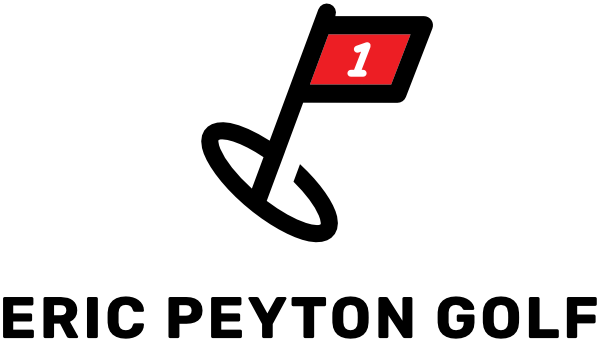Key to Aiming Your Golf Shot
A quality golf shot requires a combination of distance and direction. Get those two elements correct and chances are high that your ball will come to rest in a good spot. In this post, I’m going to focus in on an important part of the latter half; aiming.
It’s amazing how often I see people get frustrated with a great shot just because they’ve aimed poorly. A lot of times, they don’t even realize that was the issue either. They’ll set up, hit their shot, and it’ll golf flying off to the right or left of the target. They think the ball was either pushed or pulled, when in reality, it went perfectly straight; right where they were aimed.
Not only could that miss have been easily avoided, saving a shot and lowering their score, but it tends to cause a domino effect. The player thinks they’ve hit the ball off-line, so they make corrections to their swing; changing their path, grip, or something else, in order to get the ball to fly straight. One small mistake of poor aim leads to changing and tweaking things that were actually fine to begin with.
Club Face Not Body
One of the worst pieces of advice that is believed by a large number of amateur golfers is that you need to aim your shoulder (or feet) line towards the target. In short, that’s completely wrong. Your club face ought to be aimed at the target, while, your shoulder/feet line should actually be parallel left (for a right-handed player) of the target. It’s easy to think of your club and body as pointing in the same direction, but they’re slightly different.
On shorter shots, it might not be a huge difference, but on longer ones, the error becomes exponentially greater. The legendary instructor, Harvey Penick, used to teach his students to “take dead aim.” Basically, the idea is that if you aim directly at your target, chances are high that, even if you miss, you’ll still be in a good spot. As the old saying goes, “aim small, miss small.”
Secondary Target
The truth is, most people don’t know how to get their club face consistently aimed at their target, which only sets them up for a miss.
The key to getting your club face aimed properly is selecting a secondary target. Your primary target will typically be the flag or the center of the fairway; it’s where you want the ball to land. A secondary target is something much closer to your ball.
Selecting a secondary target is simple. First, stand behind your golf ball, so that it’s sitting directly between you and your primary target. Then, look on the ground about 1-2 feet in front of your ball. Most of the time, there is a small piece of dirt, grass, stick, or other object that is resting perfectly between your ball and the hole. If you need to, hold your club up in the air, so you can line up your ball, the secondary target, and primary target. You want to make sure whatever you select as your secondary target is exactly in line with your primary target. Finally, walk up to your ball and address it. Set your club face down on the ground first and make sure it’s aimed at your secondary target. It’s a lot easier to aim at something that’s a few feet in front of you than it is to aim at something hundreds of yards away. Once you’ve set your club face in line with your secondary target, take your stance with your feet and shoulders being parallel to your target line.
If you’ve aligned your club correctly, which will be easy to do with this process, you can be confident that your aim is correct.
Shot Shape
Finally, it’s important to consider the shape of your shot. Maybe it’s the ball flight you’re intending to hit, maybe it’s the flight you typically hit. Whatever it is, consider how the ball will probably fly coming off the club face.
Most amateur golfers hit a fade/slice, meaning the ball flies right for a right-handed player. If that’s you, don’t aim directly at your target. Know that your “go-to” shot is one that falls right, so move your aim point to the left of your primary target. It sounds simple, but it’ll dramatically improve your scores. All too often I see players who always hit a fade, aim straight at a flag and get mad that they miss it right. If you don’t typically hit the ball straight, then don’t aim straight at a primary target.
